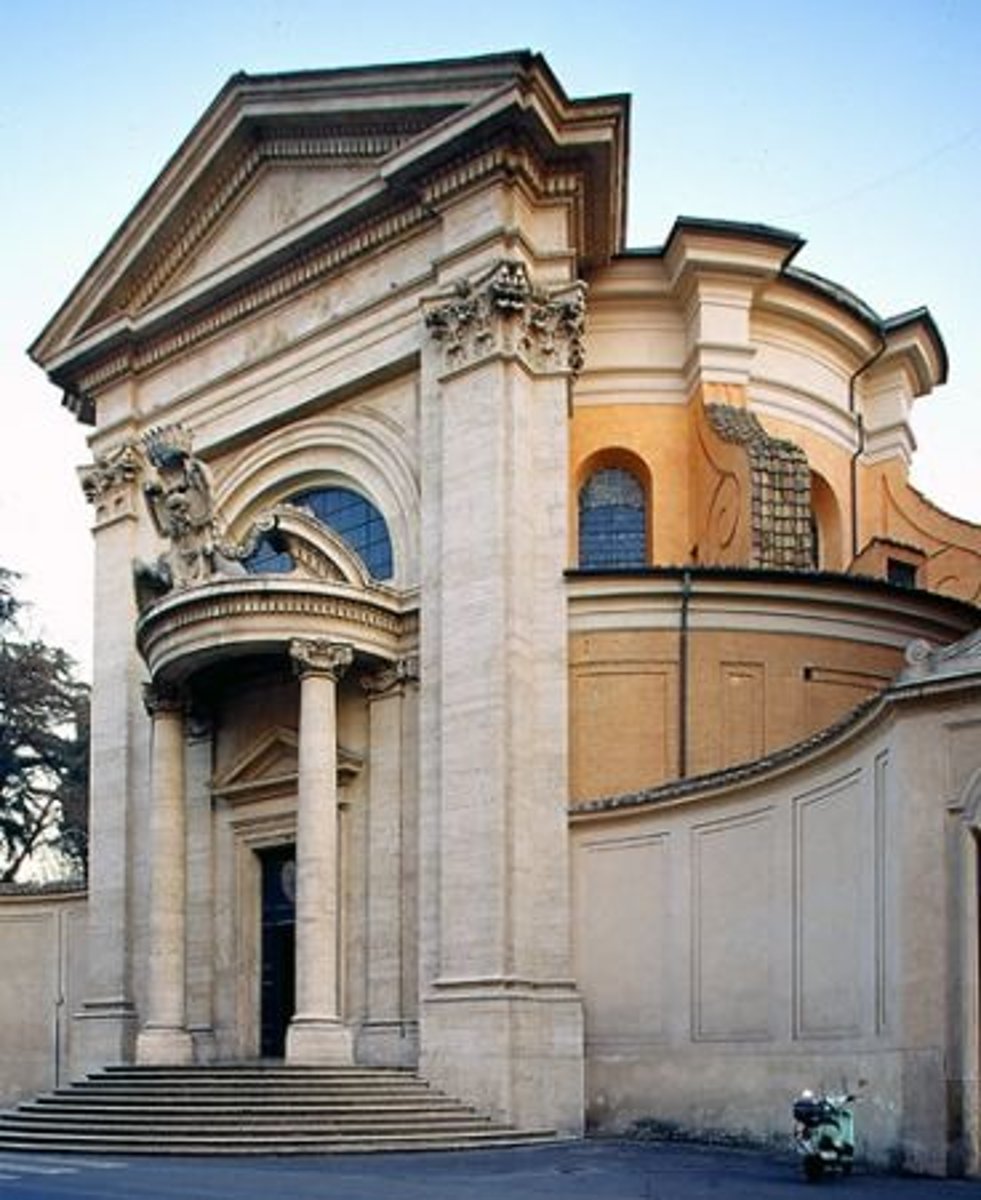HOA03 - Lecture 05 (Baroque Architecture)
1/38
There's no tags or description
Looks like no tags are added yet.
Name | Mastery | Learn | Test | Matching | Spaced |
|---|
No study sessions yet.
39 Terms
Baroque Architecture
A European style of architecture of the 17th and 18th centuries. It was based upon the transformation of classical forms with an inventive use of space and decoration. Characterized by ornate detail, exuberant curvaceous decoration and grand sweeping gestures with spatially complex compositions
Barroco
The term 'baroque' is derived from the ancient Portuguese noun, which means a pearl that is not round but of an unpredictable and elaborate shape
Baroque
The word can simply mean that something is 'elaborate' or with many details
Marble and gilt bronze
The baroque architects used these materials in abundance.
Oval
The most distinct shape of the Baroque style
very strange angles
To accomplish putting a circular dome on an oval space, the architect had to use ____________, but it did create space for sculptures and paintings
Early Baroque
Dominated by the work of Roman architects, notably the Church of the Gesu, by Giacomo della Porta, façade, and colonnade of St. Peter's Basilica by Carlo Maderno and the lavish Barberini Palace interiors by Pietro da Cortona
High Baroque
Produced major works in Rome by Pietro da Cortona, Francesco Borromini and Gian Lorenzo Bernini
Late Baroque
Saw the style spread to all parts of Europe and to the colonies of Spain and Portugal in the New World
Giovanni Lorenzo Bernini
Prominent baroque sculptor and architect of 17th century Rome. He represents the theatrical and entrepreneurial side of the Roman Baroque, welding the arts of painting, sculpture and architecture into spectacular unified effects.
Pietro da Cortona
was a prolific artist and architect of High Baroque Best known for painting fresco ceilings. A powerful designer, moving towards a strongly columnar architecture marked by dramatic chiaroscuro.
Francesco Borromini
A prominent and influential Swiss Baroque architect in Rome. Most revolutionary architect of the Roman Baroque architects. Chief rival of Bernini for Papal projects
Carlo Maderno
Italian Swiss architect. One of the fathers of Baroque Architecture. His designs were of key importance in the evolution of Italian Baroque.
Dutch Baroque
A variety of Baroque architecture that flourished in the Dutch Republic and its colonies during the Dutch Golden Age of the 17th Century.
Roman Baroque
From 1600 to late 18th Century, rome was a leader for Baroque architecture and Baroque paintings
French Baroque
Sometimes called French Classicism, a style of architecture during the reins of Louis XIII, Louis XIV, and Louis XV.
English Baroque
refer to the developments in English Architecture that were parallel to the evolution of Baroque architecture in continental Europe between the Great Fire of London (1666) and the Treaty of Utrecht (1713)
Sicilian Baroque
distinctive form of Baroque Architecture that took hold on the island of Sicily, off the southern coast of Italy, in the 17th and 18th centuries.
Petrine Baroque
Name applied by art historians to a style of Baroque architecture and decoration favored by Peter the Great and employed to design buildings in the newly-founded Russian capital, Saint Petersburg, under this monarch and his immediate successors.
Ukrainian Baroque
Known as Cossack Baroque is a style that emerged in Ukraine during the Hetmanate era in 17th - 18th Cenury. More Constructivist
Spanish Baroque
evolved in Spain and its provinces. Artists' fluency in interpreting traditional motifs of Spanish cathedral architecture in the Baroque aesthetic idiom.
Earthquake Baroque
found in the Philippines and Guatemala which suffered earthquakes during the 17th - 18th century where large public buildings were rebuilt in baroque style.
Grand stairways
occupied a central place and were used for dramatic effect, winding upward in stages, giving changing views from different levels, serving as a setting for ceremonies
Cartouche
elaborated forms and frames break up the surfaces and add three-dimensional effects to the walls
Mirrors
give the impression of depth and greater space, particularly when combined with windows
Chiaroscuro
use of strong contrasts of darkness and light for dramatic effect
Overhead sculpture
figures on or just below the ceiling, giving the impression of floating in the air
Solomonic columns
gives an illusion of motion
Palace of Versailles
Most famous royal chateau in France
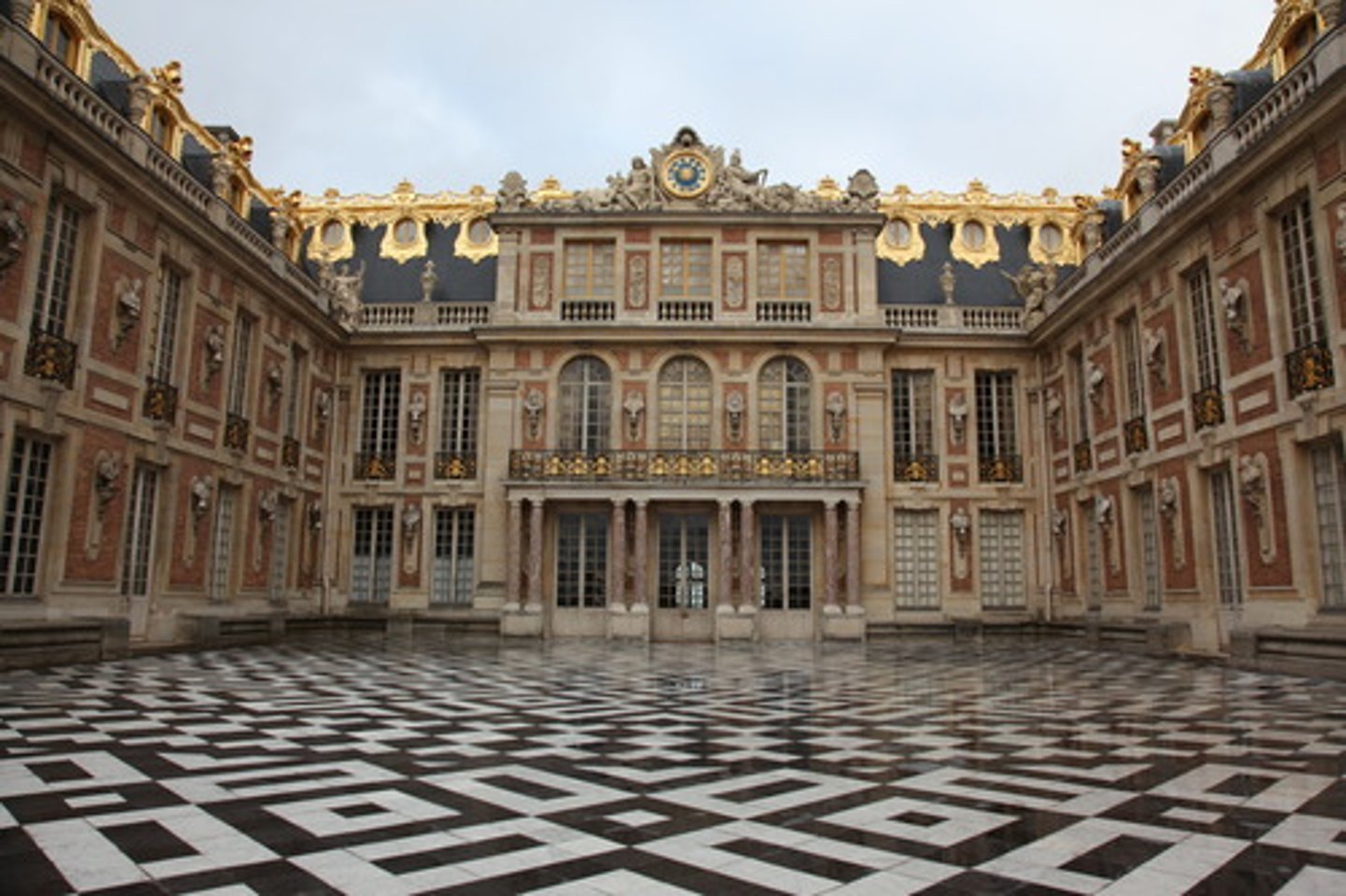
Blenheim Palace
designed by Vanbrugh
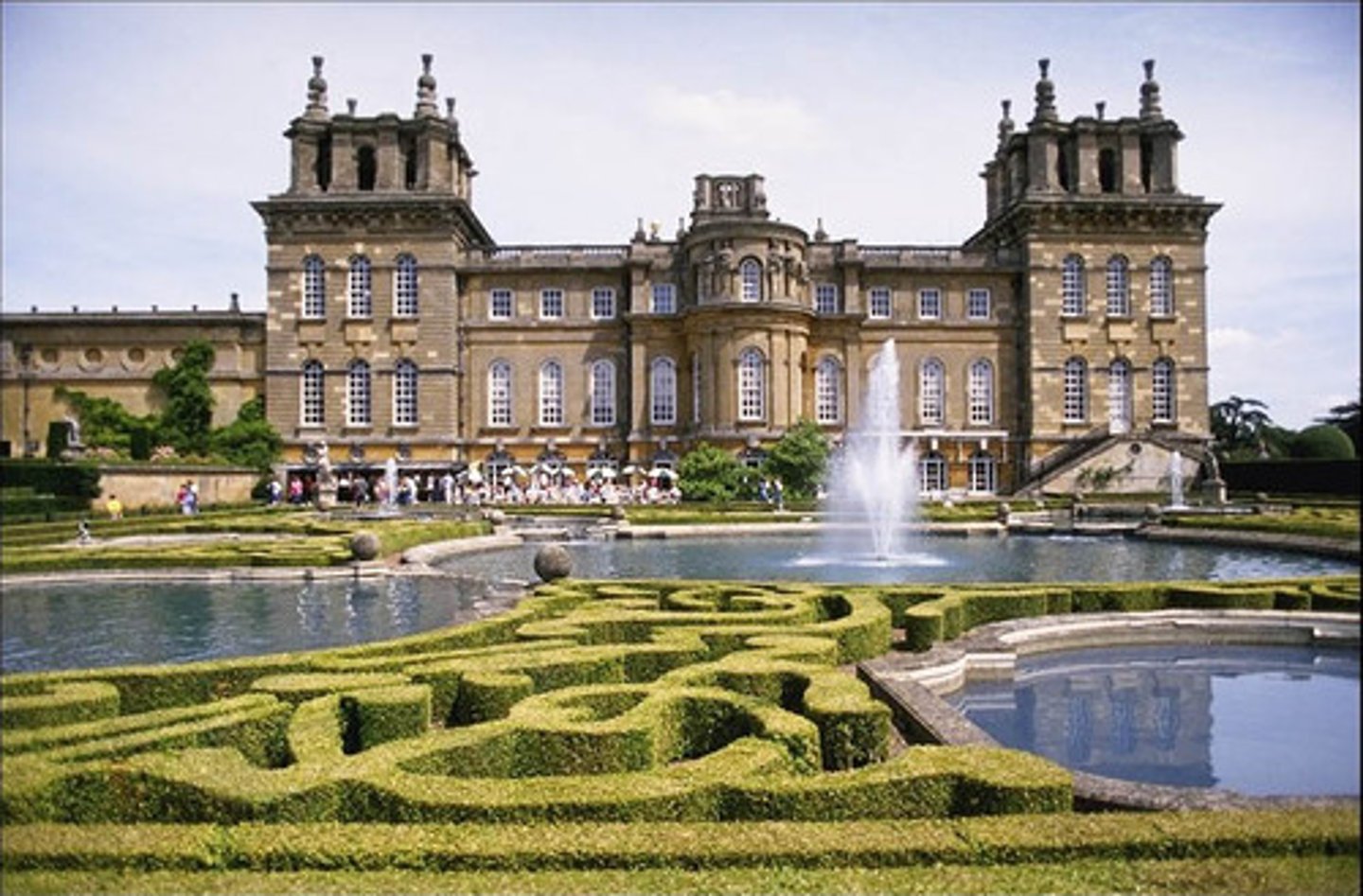
Santa Maria Della Pace
designed by Pietro da Cortona
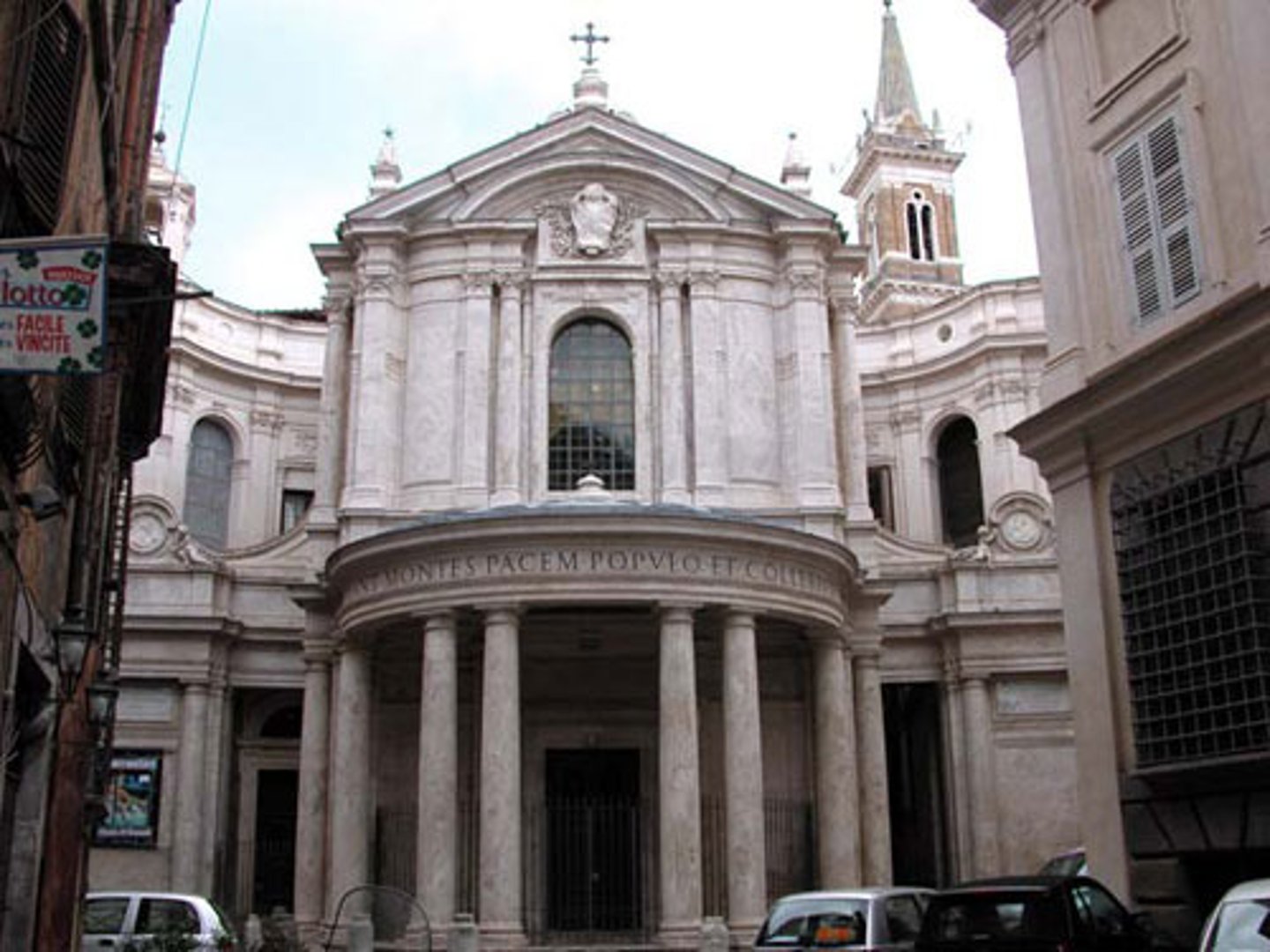
Church of the Gesu
Introduced Baroque style into architecture
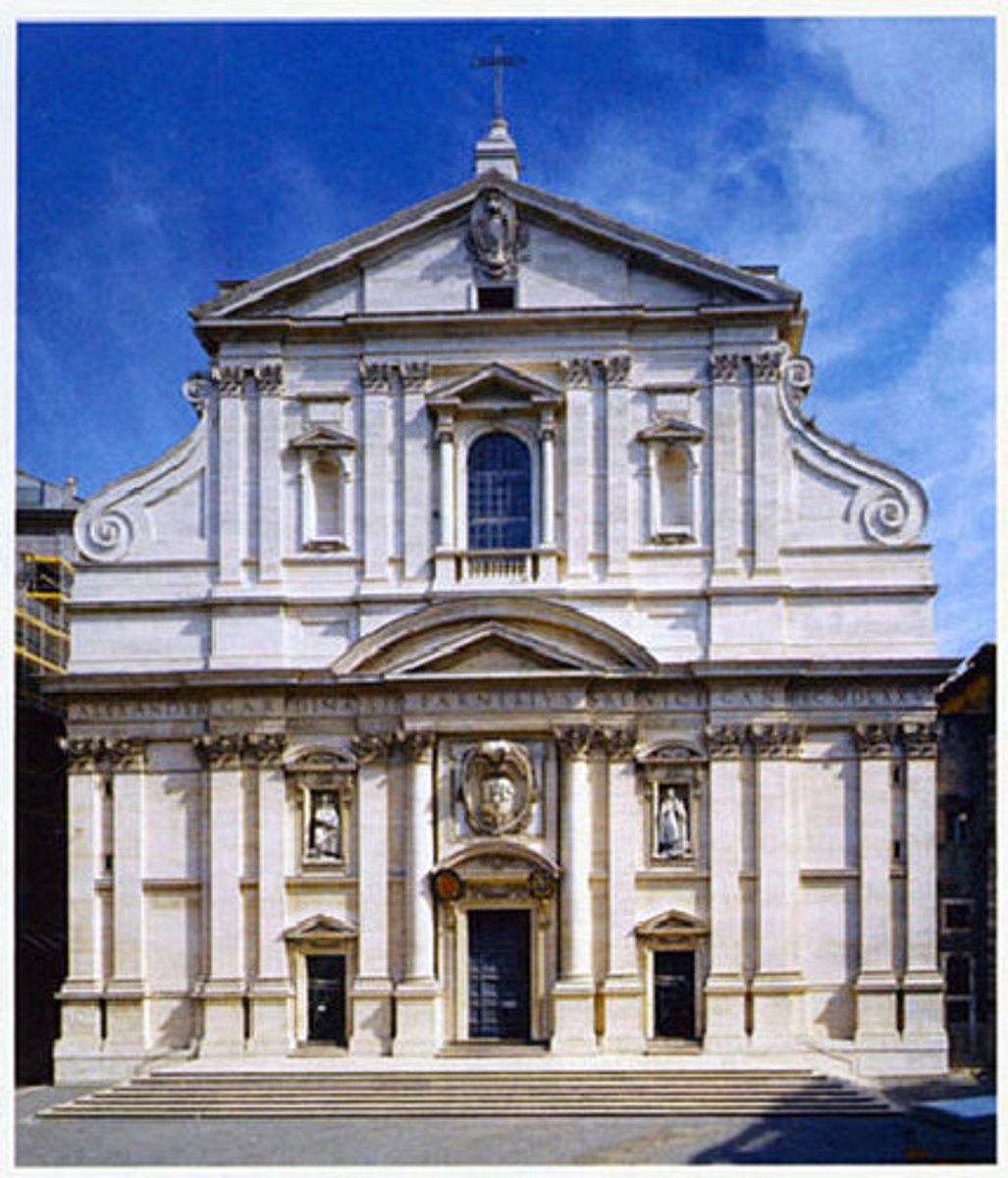
San Carlo Alle Fontane
Borromini's first independence commission. the most perfect of all baroque
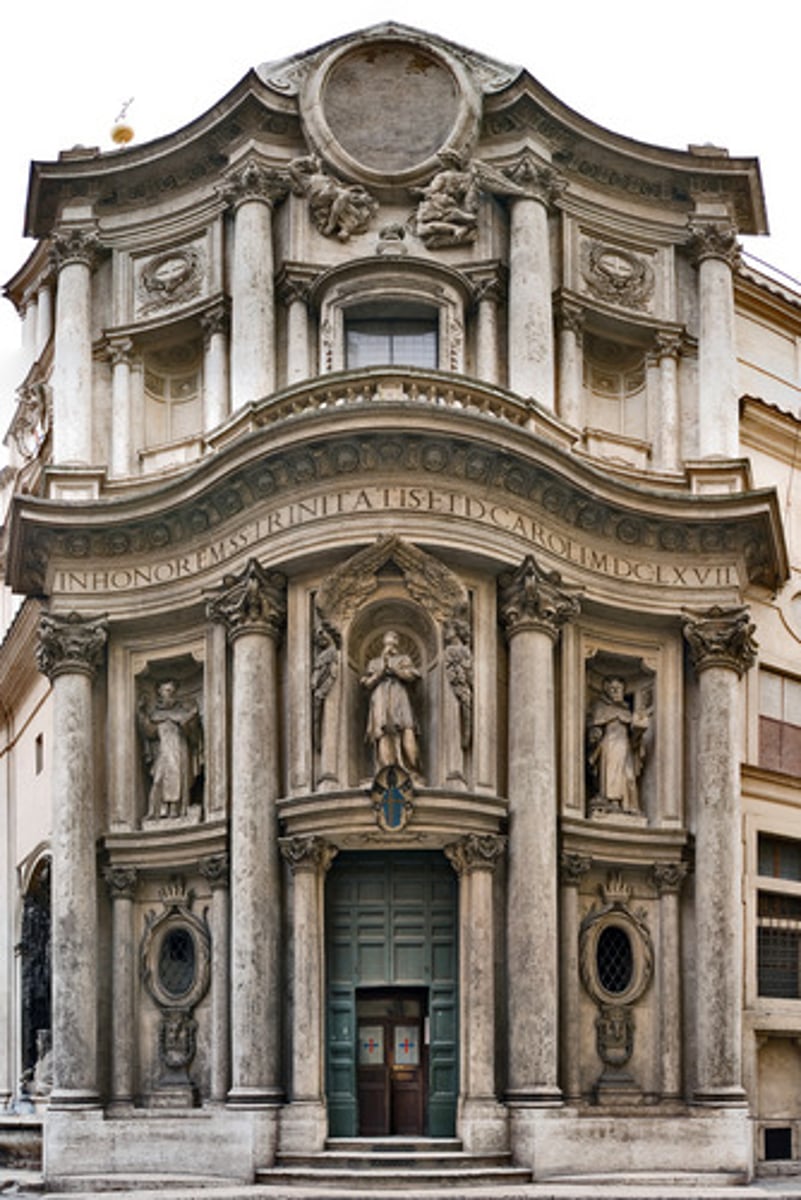
St. Peter's Square
284 tuscan columns, four rows; 140 statues of saints at top level of colonnade. central obelisk and two symmetrical fountains

St. Paul's Cathedral
the biggest church in London where royal weddings take place. It is also the seat of the Bishop of London.
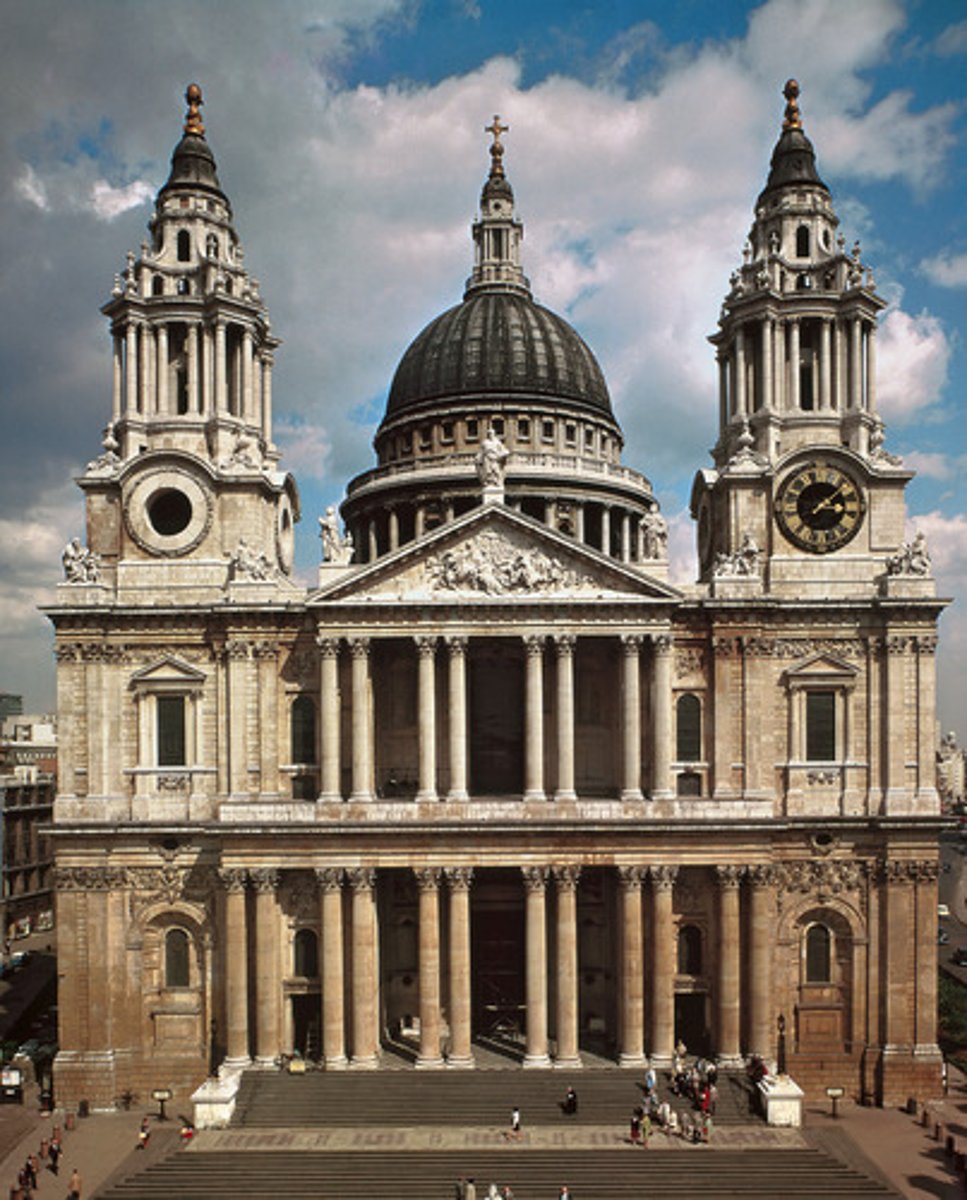
Sant' Ivo alla Sapienza
Widely regarded as Borromini's masterpiece

Basilica of the Fourteen Holy Helpers
designed by Neumann
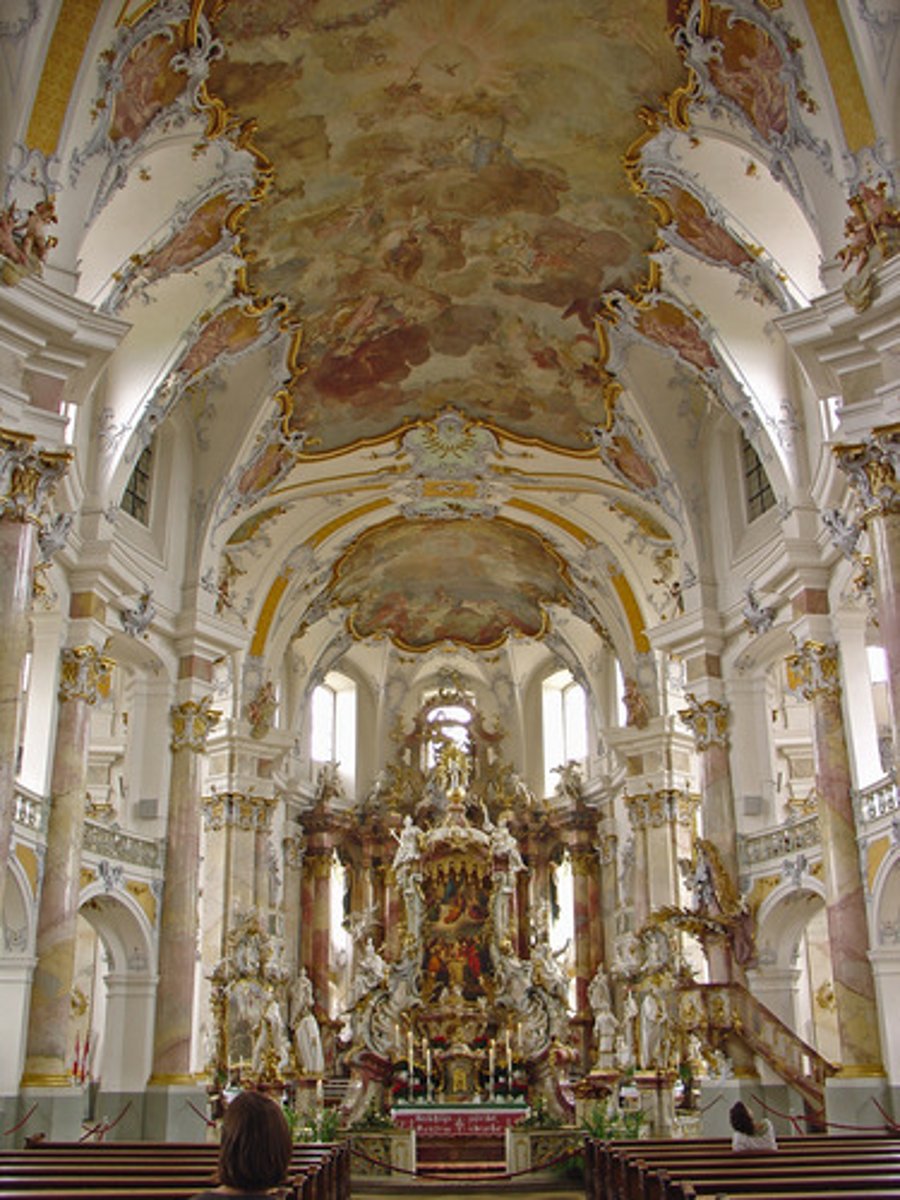
Santiago de Compostela
(burial site of St. James), most popular pilgrimage site, located toward the northwestern tip of Spain.
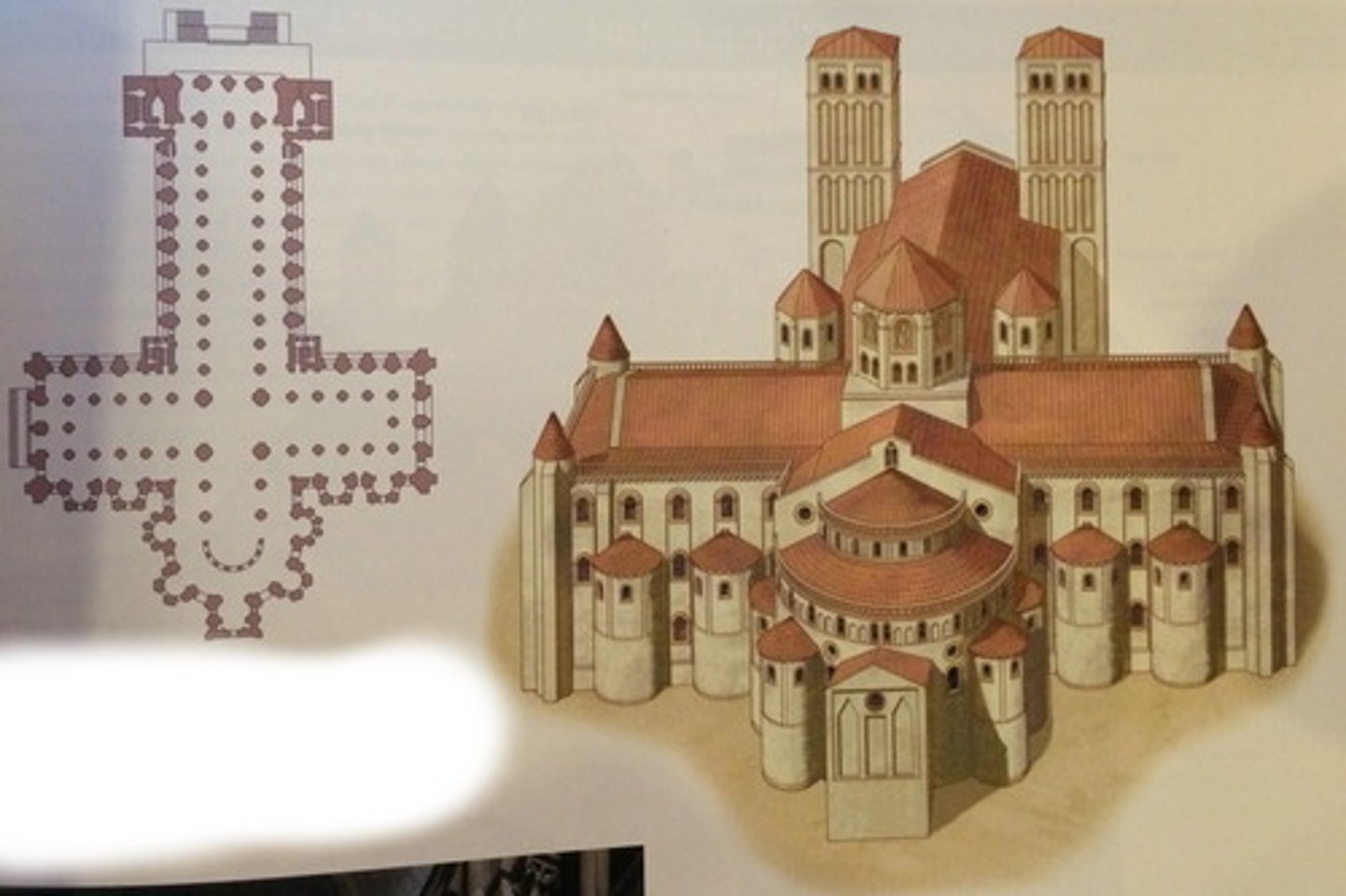
Sant' Andrea al Quirinale
designed by Bernini
